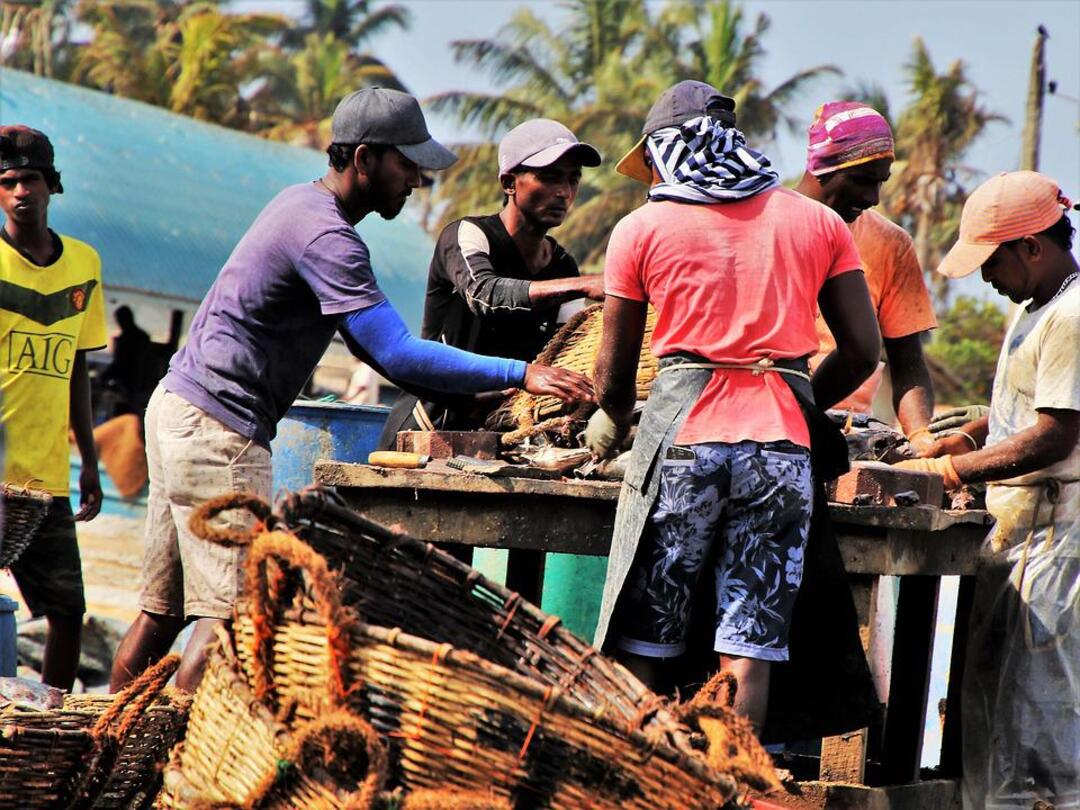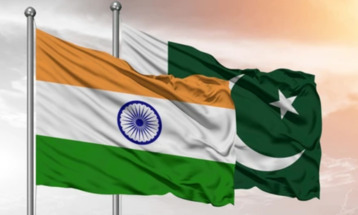-
U.N. warns up to 345 million people marching toward starvation

The U.N. food chief warned Thursday (Sep 15) that the world is facing “a global emergency of unprecedented magnitude,” with up to 345 million people marching toward starvation — and 70 million pushed closer to starvation by the war in Ukraine.
David Beasley, executive director of the U.N. World Food Program, told the U.N. Security Council that the 345 million people facing acute food insecurity in the 82 countries where the agency operates is 2½ times the number of acutely food insecure people before the COVID-19 pandemic hit in 2020.
He said it is incredibly troubling that 50 million of those people in 45 countries are suffering from very acute malnutrition and are “knocking on famine’s door.”
“What was a wave of hunger is now a tsunami of hunger,” he said, pointing to rising conflict, the pandemic’s economic ripple effects, climate change, rising fuel prices and the war in Ukraine.
Since Russia invaded its neighbour on Feb. 24, Mr. Beasley said, soaring food, fuel and fertilizer costs have driven 70 million people closer to starvation.

Despite the agreement in July allowing Ukrainian grain to be shipped from three Black Sea ports that had been blockaded by Russia and continuing efforts to get Russian fertilizer back to global markets, “there is a real and dangerous risk of multiple famines this year,” he said.
“And in 2023, the current food price crisis could develop into a food availability crisis if we don’t act,” he added.
FAO: World food prices decline amid relief from restarted Ukraine grain exports
The Security Council was focusing on conflict-induced food insecurity and the risk of famine in Ethiopia, northeastern Nigeria, South Sudan and Yemen. But Mr. Beasley and U.N. humanitarian chief Martin Griffiths also warned about the food crisis in Somalia, which they both recently visited, and Mr. Griffiths also put Afghanistan high on the list.
“Famine will happen in Somalia,” Mr. Griffiths said, and “be sure it won’t be the only place either.”
He cited recent assessments that identified “hundreds of thousands of people facing catastrophic levels of hunger,” meaning they are at the worst “famine” level.
WFP: Number of people at risk of starvation in Horn of Africa has increased to 22 mln
Mr. Beasley recalled his warning to the council in April 2020 “that we were then facing famine, starvation of biblical proportions.” He said then the world “stepped up with funding and tremendous response, and we averted catastrophe.”
“We are on the edge once again, even worse, and we must do all that we can — all hands on deck with every fibre of our bodies,” he said. “The hungry people of the world are counting on us, and … we must not let them down.”
Mr. Griffiths said the widespread and increasing food insecurity is a result of the direct and indirect impact of conflict and violence that kills and injures civilians, forces families to flee the land they depend on for income and food, and leads to economic decline and rising prices for food that they can’t afford.
UN World Food Programme concerned about food crisis in Sri Lanka
After more than seven years of war In Yemen, he said, “some 19 million people — six out of 10 — are acutely food insecure, an estimated 160,000 people are facing catastrophe, and 538,000 children are severely malnourished.”
Mr. Beasley said the Ukraine war is stoking inflation in Yemen, which is 90% reliant on food imports. The World Food Program hopes to provide aid to about 18 million people, but its costs have risen 30% this year to $2.6 billion.
As a result, it has been forced to cut back, so Yemenis this month are getting only two-thirds of their previous rations, he said.
Mr. Beasley said South Sudan faces “its highest rate of acute hunger since its independence in 2011” from Sudan.
Syria is witnessing unprecedented levels of poverty, UN official
He said 7.7 million people, over 60% of the population, are “facing critical or worse levels of food insecurity.” Without a political solution to escalating violence and substantial spending on aid programs, “many people in South Sudan will die,” he warned.
In northern Ethiopia’s Tigray, Afar and Amhara regions, more than 13 million people need life-saving food, Mr. Griffiths said. He pointed to a survey in Tigray in June that found 89% of people food insecure, “more than half of them severely so.”
Mr. Beasley said a truce in March enabled WFP and its partners to reach almost 5 million people in the Tigray area, but resumed fighting in recent weeks “threatens to push many hungry, exhausted families over the edge.”
Study shows over 5 billion would die of starvation in nuclear war
In northeast Nigeria, the U.N. projects that 4.1 million people are facing high levels of food insecurity, including 588,000 who faced emergency levels between June and August, Mr. Griffiths said.
He said almost half of those people couldn’t be reached because of insecurity, and the U.N. fears “some people may already be at the level of catastrophe and already dying.”
Mr. Griffiths urged the Security Council to “leave no stone unturned” in trying to end these conflicts, and to step up financing for humanitarian operations, saying U.N. appeals in those four countries are all “well below half of the required funding.”
Source: g7tamil
You May Also Like
Popular Posts
Caricature
BENEFIT Sponsors BuildHer...
- April 23, 2025
BENEFIT, the Kingdom’s innovator and leading company in Fintech and electronic financial transactions service, has sponsored the BuildHer CityHack 2025 Hackathon, a two-day event spearheaded by the College of Engineering and Technology at the Royal University for Women (RUW).
Aimed at secondary school students, the event brought together a distinguished group of academic professionals and technology experts to mentor and inspire young participants.
More than 100 high school students from across the Kingdom of Bahrain took part in the hackathon, which featured an intensive programme of training workshops and hands-on sessions. These activities were tailored to enhance participants’ critical thinking, collaborative problem-solving, and team-building capabilities, while also encouraging the development of practical and sustainable solutions to contemporary challenges using modern technological tools.
BENEFIT’s Chief Executive Mr. Abdulwahed AlJanahi, commented: “Our support for this educational hackathon reflects our long-term strategic vision to nurture the talents of emerging national youth and empower the next generation of accomplished female leaders in technology. By fostering creativity and innovation, we aim to contribute meaningfully to Bahrain’s comprehensive development goals and align with the aspirations outlined in the Kingdom’s Vision 2030—an ambition in which BENEFIT plays a central role.”
Professor Riyadh Yousif Hamzah, President of the Royal University for Women, commented: “This initiative reflects our commitment to advancing women in STEM fields. We're cultivating a generation of creative, solution-driven female leaders who will drive national development. Our partnership with BENEFIT exemplifies the powerful synergy between academia and private sector in supporting educational innovation.”
Hanan Abdulla Hasan, Senior Manager, PR & Communication at BENEFIT, said: “We are honoured to collaborate with RUW in supporting this remarkable technology-focused event. It highlights our commitment to social responsibility, and our ongoing efforts to enhance the digital and innovation capabilities of young Bahraini women and foster their ability to harness technological tools in the service of a smarter, more sustainable future.”
For his part, Dr. Humam ElAgha, Acting Dean of the College of Engineering and Technology at the University, said: “BuildHer CityHack 2025 embodies our hands-on approach to education. By tackling real-world problems through creative thinking and sustainable solutions, we're preparing women to thrive in the knowledge economy – a cornerstone of the University's vision.”
opinion
Report
ads
Newsletter
Subscribe to our mailing list to get the new updates!






















